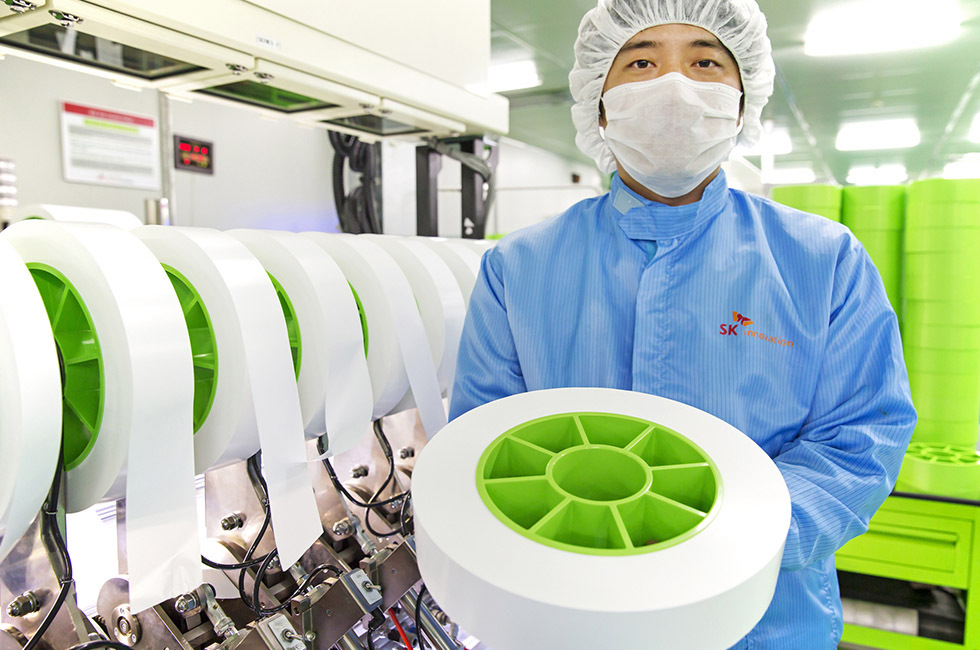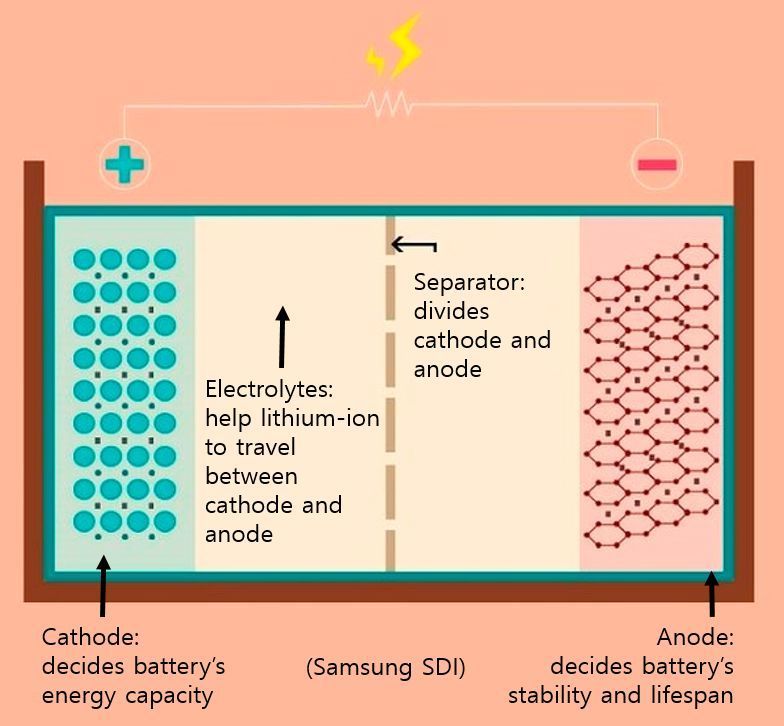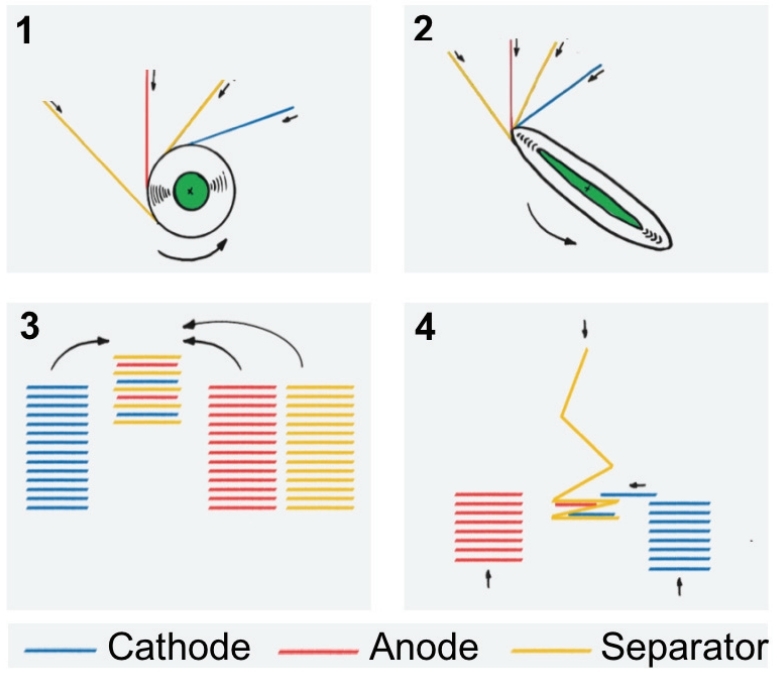[News Analysis] EV fires draw attention to separator tech of LG Chem, Samsung SDI, SK Innovation
Korean battery giants apply different technologies to make batteries safer
By Kim Byung-wookPublished : Nov. 2, 2020 - 16:31

The recent recall of Hyundai Motor’s Kona electric vehicle is shining a spotlight on separators, one of the four key components of EV batteries along with cathodes, anodes and electrolytes.
Separators are basically thin walls with tiny holes that divide cathodes from anodes. When batteries are charged and discharged, ions go back and forth between cathodes and anodes through these tiny holes. Separators prevent cathodes and anodes from reacting to each other and triggering short circuits or fires. In short, separators are what prevent batteries from exploding.

To make their separators safer, South Korean battery giants LG Chem, Samsung SDI and SK Innovation apply different technologies.
But first, it’s crucial to understand how separators are made.
First, plastic particles and solvent are mixed together and processed through a rolling machine into thin sheets.
Then those sheets are allowed to cool off. During the cooling process, solvent crystallizes between the plastic particles. When these crystals are extracted, they leave behind small holes for ions to travel through.
After the holes are made, they are stretched in four directions until they achieve the necessary thinness. To help these thin sheets maintain their original shape, they are coated with ceramic particles mixed with solvent. Without the coating, the sheets might stretch out or shrink as they are elastic.
When the solvent is retrieved, only the ceramic coating remains. After this complex process, the separators are finally born.
How they are stretched and coated
SK Innovation, the only Korean battery firm that manufactures its own separators, applies several technologies that differentiates its separators from the others.
SK IE Technology, a wholly owned subsidiary under SK Innovation, uses a “sequential stretching process.” Instead of stretching separators in four directions simultaneously, SKIET stretches them horizontally first and vertically later.
“When separators are stretched in all directions simultaneously, the thickness becomes inconsistent as the center remains thick while the exterior becomes thin. However, SKIET’s sequential stretching allows even thickness, which is crucial for the quality of separators,” an SK Innovation official said.
“Though the technology looks simple, SKIET was the first in the world to develop the technology in 2007. Also, when SKIET’s separators are penetrated by sharp materials such as nails, the separators elongate as much as possible so that the breach doesn’t happen near the border between the cathode and anode.”
SKIET’s separators are also eco-friendly. They are coated with ceramic particles mixed with water, not solvent, which is a chemical product. SKIET simply heats the separators and lets the water evaporate.
LG Chem, though it doesn’t manufacture its own separators, imports separators from suppliers and applies its patented coating technology developed in 2004, called safety-reinforced separator technology.
Simply put, the safety-reinforced separator technology coats separators with nano-scale ceramic particles, allowing separators to maintain their shape even at the extreme heat of 180 degrees Celsius. Unlike typical separators, which consist of just two ceramic layers, safety-reinforced separators have three.
“Even iron particles can’t penetrate through the ceramic coatings of LG Chem’s safety-reinforced separators,” an LG Chem official said.
Samsung SDI, like LG Chem, doesn’t manufacture separators but coats its batteries with ceramic particles.
How they are stacked

In addition to the separator technology, how separators are arranged inside batteries determines the safety of those batteries.
For EVs, LG Chem and SK Innovation offer pouch-type batteries in a flat rectangular shape, while Samsung SDI’s prismatic cells are designed like rectangular aluminum cans.
Inside these rectangular containers, Samsung SDI rolls a thin film that consists of three layers -- in the sequence of cathode, separator and anode -- like a roll of toilet paper. This is called winding technology.
To help the three layers hold together, Samsung SDI glues the separator layer to the cathode and anode layers to enhance durability.
However, the round roll of film can’t fit perfectly into a rectangular container and the empty spaces make the battery less powerful as they serve no purpose. Above all, the winding technology gives relatively more stress on the round edges of the roll compared to other stacking methods.
To overcome the limits of this winding technology, Samsung SDI has introduced “Z-folding” technology and aims to transition fully to this technology down the road.
SK Innovation is already making its batteries with Z-folding technology.
In Z-folding, sheets of cathode and anode are inserted into a folded separator film. First, a cathode sheet is placed on the separator film. Next, the separator is folded over the cathode sheet, allowing an anode sheet to then be placed on the separator. This process is repeated multiple times.
On top of making the battery more stable with less stress concentrated on the edges, the Z-folding stack also fits better inside a rectangular container. This can make the battery more powerful by minimizing leftover spaces.
However, Z-folding technology requires a great degree of accuracy as the cathode and anode sheets have to be exactly the same size. Otherwise, they can stick out and react with each other and cause short circuits.
Unlike Samsung SDI, SK Innovation doesn’t use glue to hold sheets of cathode and anode together with the separator film. Rather, SK Innovation applies a special technique that physically ties the cathode and anode sheets together with the separator film.
However, as they are not glued together, if gases build up inside a battery due to overheating, the pressure can potentially impact their structure.
LG Chem, which previously used a stacking technology similar to Z-folding, moved on to its patented lamination and stacking technology. As Z-folding technology required a great level of accuracy, battery production was slow and the yield was low.
Simply put, the lamination and stacking technology cuts sheets of cathode, anode and separators so they are the same size and piles them up like pancakes. As it is possible to cut the sheets to fit perfectly into a rectangular container, the lamination and stacking technology leaves no wasted space, giving maximum power to the battery.
LG Chem applies heat and pressure so the layers will stick together while holding their original shape.
“LG Chem employs lamination & stacking technology because it can cut sheets of cathodes, anodes and separators in all different shapes. This is really helpful as LG Chem manufactures batteries for smartphone batteries and smaller IT gadgets,” an LG Chem official said.
By Kim Byung-wook (kbw@heraldcorp.com)



![[AtoZ into Korean mind] Humor in Korea: Navigating the line between what's funny and not](http://res.heraldm.com/phpwas/restmb_idxmake.php?idx=644&simg=/content/image/2024/04/22/20240422050642_0.jpg&u=)
![[Exclusive] Korean military set to ban iPhones over 'security' concerns](http://res.heraldm.com/phpwas/restmb_idxmake.php?idx=644&simg=/content/image/2024/04/23/20240423050599_0.jpg&u=20240423183955)



![[Graphic News] 77% of young Koreans still financially dependent](http://res.heraldm.com/phpwas/restmb_idxmake.php?idx=644&simg=/content/image/2024/04/22/20240422050762_0.gif&u=)
![[Herald Interview] Why Toss invited hackers to penetrate its system](http://res.heraldm.com/phpwas/restmb_idxmake.php?idx=644&simg=/content/image/2024/04/22/20240422050569_0.jpg&u=20240422150649)





![[Exclusive] Korean military to ban iPhones over security issues](http://res.heraldm.com/phpwas/restmb_idxmake.php?idx=652&simg=/content/image/2024/04/23/20240423050599_0.jpg&u=20240423183955)



![[Today’s K-pop] Ateez confirms US tour details](http://res.heraldm.com/phpwas/restmb_idxmake.php?idx=642&simg=/content/image/2024/04/23/20240423050700_0.jpg&u=)